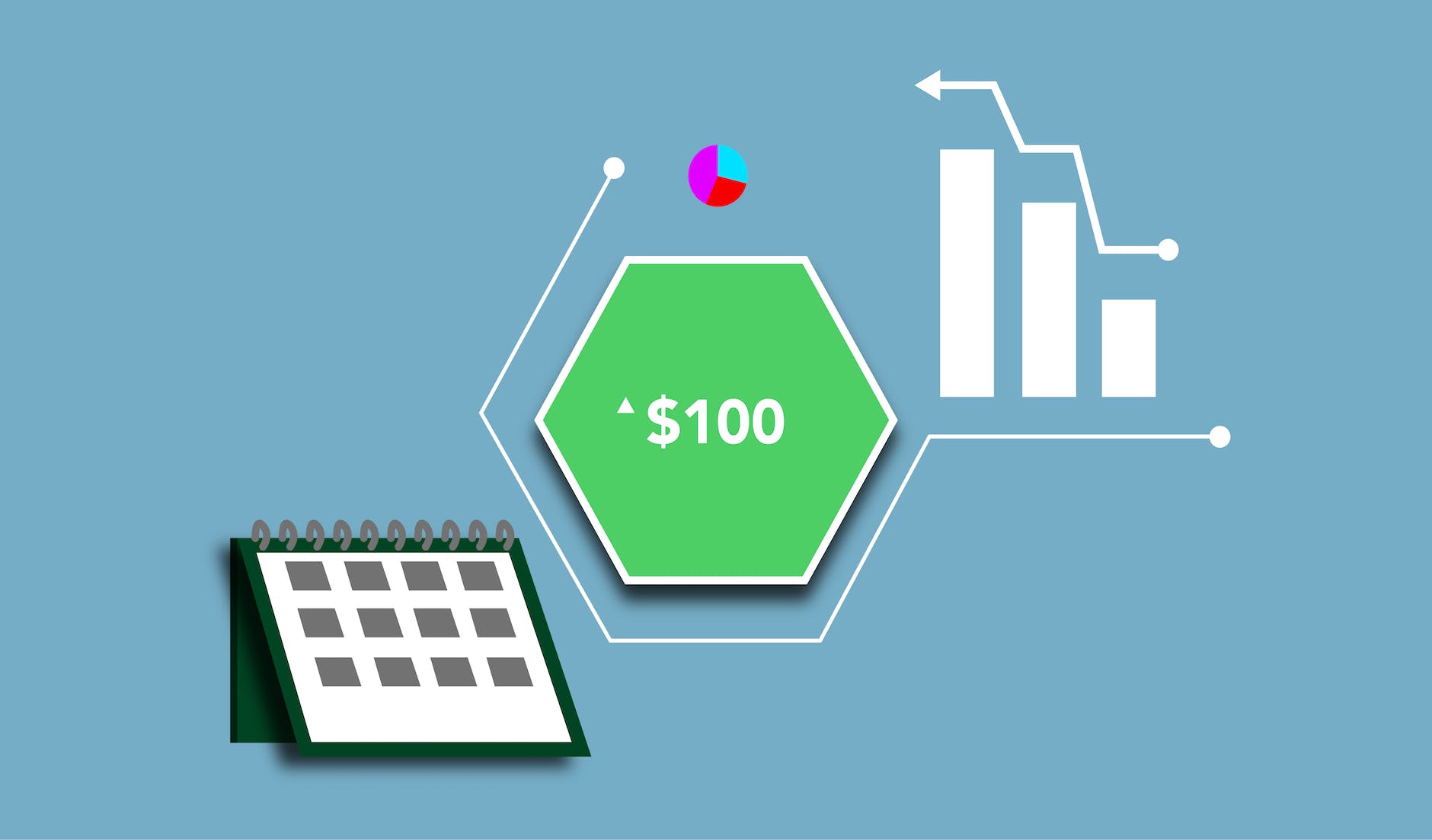Introduction to Increasing Dealership Profitability
When it comes to running a successful car dealership, increasing profitability is a top priority. By focusing on strategies and areas that can enhance your dealership’s financial performance, you can accelerate your bottom line and achieve long-term success. In this section, we will explore why it is important to focus on increasing profitability and highlight key areas that can be improved for better results.
Why Focus on Increasing Profitability?
Increasing profitability is essential for the sustainability and growth of any dealership. By maximizing profits, dealerships can reinvest in their business, expand operations, and provide better services to customers. Here are a few reasons why focusing on increasing profitability is crucial:
-
Sustainable Growth: Higher profits allow dealerships to reinvest in their operations, upgrade facilities, and expand their inventory. This helps attract more customers and establishes the dealership as a trusted name in the market.
-
Competitive Advantage: A profitable dealership has a competitive edge over its rivals. It can invest in marketing efforts, implement cutting-edge technologies, and provide exceptional customer experiences that set it apart from the competition.
-
Financial Stability: Increasing profitability ensures financial stability for the dealership. It allows for better cash flow management, reduces the reliance on external financing, and provides a safety net for unforeseen circumstances.
-
Attracting Investors: A profitable dealership is an attractive proposition for potential investors. Higher profits demonstrate that the business is well-managed and has the potential for future growth, making it more appealing to investors and lenders.
Key Areas to Improve for Better Results
To increase dealership profitability, it is important to identify and improve key areas that have a direct impact on the financial performance of the business. Here are some areas to focus on:
-
Marketing Strategies: Implement effective marketing strategies to reach a wider audience and attract more customers. Utilize digital marketing channels, such as social media and online advertising, to engage with potential buyers and promote your dealership’s offerings.
-
Cost-saving Measures: Streamline operations and processes to reduce overhead costs. Explore ways to negotiate better deals with suppliers and vendors, which can lead to cost savings and increased profitability.
-
Expanding Product Offerings: Identify new revenue streams by expanding your product offerings. Consider adding value with additional services, such as automotive repairs, maintenance packages, or financing options. This not only increases revenue but also enhances customer satisfaction and loyalty.
-
Enhancing Customer Experience: Focus on improving customer service to build long-term relationships and encourage repeat business. Invest in training programs for your staff to ensure they provide exceptional service to every customer. Building customer loyalty and retention is key to sustaining profitability.
-
Leveraging Technology: Implement auto dealer software and utilize data analytics to make informed business decisions. Use technology to optimize inventory management, track sales performance, and identify areas of improvement.
By focusing on these key areas, you can take significant steps towards increasing dealership profitability. Remember, profitability is a result of continuous improvement in various aspects of your business. Stay proactive, adapt to market changes, and regularly assess your strategies to ensure long-term success.
Marketing Strategies for Increased Profitability
To increase profitability for a dealership, effective marketing strategies play a crucial role. By utilizing digital marketing channels and implementing targeted advertising and promotions, dealerships can attract more customers and generate higher sales.
Utilizing Digital Marketing Channels
In today’s digital age, leveraging various online platforms is essential for reaching a wider audience. Dealerships can utilize digital marketing channels to effectively promote their inventory and services. Some key strategies include:
-
Search Engine Optimization (SEO): Optimizing dealership websites with relevant keywords and quality content to improve search engine rankings and visibility. This allows potential customers to find the dealership more easily when searching for specific vehicles or services.
-
Social Media Marketing: Establishing a strong presence on popular social media platforms like Facebook, Instagram, and Twitter. Engaging with customers, sharing vehicle highlights, and providing updates about promotions and events can help build brand awareness and drive traffic to the dealership.
-
Email Marketing: Building an email list of interested customers and sending regular newsletters and promotions to keep them engaged and informed about the latest offers and updates.
-
Online Advertising: Leveraging paid advertising platforms, such as Google Ads or social media ads, to target specific demographics and increase visibility among potential customers.
For more detailed strategies and insights on dealership marketing, check out our article on dealership marketing strategies.
Targeted Advertising and Promotions
To maximize profitability, dealerships should focus on targeted advertising and promotions that specifically cater to their customer base. By understanding the preferences and needs of potential buyers, dealerships can tailor their marketing efforts to attract the right audience. Some effective strategies include:
-
Local Advertising: Targeting local customers through radio, television, or print media advertising. This helps to create awareness among the local community and drive foot traffic to the dealership.
-
Targeted Online Ads: Using data analytics and customer insights to create targeted online ads that reach potential customers based on their demographics, interests, and online behavior.
-
Promotions and Incentives: Offering special promotions, discounts, or incentives to attract customers. This could include limited-time offers, referral programs, or exclusive deals for loyal customers.
By implementing targeted advertising and promotions, dealerships can effectively connect with their target market and increase the chances of converting leads into sales.
In the competitive automotive industry, effective marketing strategies are vital for increasing dealership profitability. By utilizing digital marketing channels, implementing targeted advertising, and offering attractive promotions, dealerships can enhance their visibility, attract more customers, and ultimately drive higher sales.
Cost-saving Measures for Dealerships
In order to increase dealership profitability, it is essential to implement effective cost-saving measures. By streamlining operations and processes, as well as negotiating better supplier deals, dealerships can reduce expenses and improve their bottom line.
Streamlining Operations and Processes
Streamlining operations and processes is a key factor in reducing costs and increasing efficiency. By identifying areas of inefficiency and implementing improvements, dealerships can save both time and money.
One way to streamline operations is through the implementation of auto dealer software. Dealer management software solutions can automate various tasks, such as inventory management, sales processes, and customer relationship management. This not only saves time but also minimizes the risk of errors and improves overall productivity. For more information on auto dealer software, refer to our article on dealer management software solutions.
Additionally, conducting regular process audits can help identify bottlenecks and areas for improvement. By analyzing workflows and identifying redundancies, dealerships can optimize their operations and reduce unnecessary expenses.
Negotiating Better Supplier Deals
Another effective cost-saving measure for dealerships is negotiating better deals with suppliers. By leveraging their purchasing power, dealerships can secure better pricing and terms, resulting in significant cost savings.
To begin, dealerships should conduct thorough research to identify alternative suppliers and compare pricing and quality. This enables them to negotiate from a position of knowledge and leverage.
When negotiating with suppliers, dealerships should focus on building long-term relationships based on mutual benefits. By demonstrating loyalty and consistency in purchasing, dealerships can negotiate better pricing, bulk discounts, or favorable payment terms.
Furthermore, dealerships can explore the possibility of consolidating purchases with a smaller number of suppliers. This not only simplifies the procurement process but also increases the dealership’s bargaining power.
Implementing cost-saving measures, such as streamlining operations and negotiating better supplier deals, can significantly contribute to increasing dealership profitability. By optimizing processes and reducing unnecessary expenses, dealerships can allocate resources more efficiently and improve their overall financial performance. For more strategies to enhance dealership profitability, consider exploring our article on improving dealership performance.
Expanding Product Offerings
To increase dealership profitability, it’s essential to explore expanding product offerings. By identifying new revenue streams and adding value with additional services, dealerships can attract more customers and generate higher sales.
Identifying New Revenue Streams
One effective way to increase profitability is by identifying new revenue streams. This can involve diversifying the range of products offered at the dealership. For example, dealerships can consider expanding their inventory to include different vehicle models, brands, or even pre-owned vehicles. This allows the dealership to cater to a wider range of customer preferences and increase the chances of making a sale.
Additionally, dealerships can explore other complementary products, such as accessories, parts, or automotive merchandise. By offering these items, dealerships can generate additional revenue while providing convenience to customers who may need these products.
It’s important to conduct market research and analyze customer preferences to determine the most profitable products for expansion. By understanding the demands of the target audience, dealerships can make informed decisions about which products to introduce or focus on. For more information on improving dealership performance, check out our article on improving dealership performance.
Adding Value with Additional Services
In addition to expanding product offerings, dealerships can enhance profitability by providing additional services that add value to the customer experience. These services can include maintenance and repair services, extended warranties, vehicle customization options, and financing solutions. By offering these services in-house, dealerships can increase customer satisfaction and loyalty while generating additional revenue.
For example, providing maintenance and repair services not only generates revenue from the service itself but also creates opportunities for upselling and cross-selling of parts and accessories. Offering financing options or working with financing partners can make it easier for customers to purchase vehicles, ultimately increasing sales.
To determine which additional services to offer, dealerships should consider the target audience’s needs and preferences. Conducting market research and analyzing customer feedback can provide valuable insights into the services that are most likely to attract customers and contribute to profitability. For more information on successful dealership strategies, check out our article on successful auto dealer strategies.
By expanding product offerings and adding value with additional services, dealerships can tap into new revenue streams and increase profitability. It’s crucial to assess market demand, analyze customer preferences, and stay updated with industry trends to make informed decisions about product expansion and service offerings. This ensures that the dealership is well-positioned to meet customer needs and maximize profitability.
Enhancing Customer Experience
A key factor in increasing dealership profitability is enhancing the customer experience. By focusing on improving customer service and building customer loyalty and retention, dealerships can cultivate a loyal customer base and generate repeat business.
Improving Customer Service
Providing exceptional customer service is paramount in today’s competitive automotive industry. By delivering a positive and personalized experience, dealerships can establish a strong rapport with customers and create lasting impressions.
To improve customer service, dealerships should focus on the following:
-
Effective Communication: Clear and prompt communication is vital in addressing customer inquiries, concerns, and service requests. Dealership staff should be trained to actively listen, provide accurate information, and ensure that customers feel heard and valued.
-
Knowledgeable Staff: Well-trained and knowledgeable sales and service staff inspire confidence in customers. Dealerships should invest in ongoing training programs to keep their staff up-to-date with the latest industry trends, product knowledge, and customer service techniques.
-
Efficient Processes: Streamlining dealership processes, such as paperwork, financing, and vehicle delivery, can significantly enhance the customer experience. By reducing wait times and simplifying processes, dealerships can improve overall customer satisfaction.
-
Post-Sale Support: Providing support after the sale is crucial for maintaining customer satisfaction. Timely follow-ups, addressing any concerns, and offering assistance with vehicle maintenance and service can go a long way in building trust and loyalty.
Building Customer Loyalty and Retention
Building customer loyalty and retention is a cost-effective strategy for increasing profitability. Repeat customers not only generate additional revenue but also serve as brand advocates, referring friends and family to the dealership.
To build customer loyalty and retention, dealerships should consider the following:
-
Personalized Engagement: Tailoring interactions based on customer preferences and needs can create a sense of exclusivity and personalized attention. Dealerships can leverage customer relationship management (CRM) systems to track customer interactions and provide targeted offers and incentives.
-
Reward Programs: Implementing loyalty reward programs can incentivize customers to continue doing business with the dealership. Programs that offer discounts, special promotions, or exclusive benefits for loyal customers can be highly effective in encouraging repeat purchases.
-
Regular Communication: Staying in touch with customers through email newsletters, social media updates, and personalized messages can help dealerships maintain a connection with their customer base. Providing relevant information, such as maintenance tips, upcoming promotions, or new vehicle releases, keeps customers engaged and informed.
-
Exceptional After-Sales Service: Going above and beyond to provide exceptional after-sales service can leave a lasting impression on customers. Dealerships should focus on resolving any issues promptly, offering convenient service appointments, and providing a positive service experience.
By prioritizing customer service and building strong relationships with customers, dealerships can create a loyal customer base that continues to support the business. For more insights on improving dealership performance and implementing effective strategies, check out our articles on improving dealership performance and successful auto dealer strategies.
Leveraging Technology for Profitability
In today’s digital age, technology plays a crucial role in increasing dealership profitability. By harnessing the power of auto dealer software and data analytics, dealerships can make informed decisions, streamline processes, and drive better results.
Implementing Auto Dealer Software
Auto dealer software provides a comprehensive solution for managing various aspects of dealership operations. This software automates critical tasks such as inventory management, sales tracking, customer relationship management, and more. By implementing auto dealer software, dealerships can streamline their processes, reduce manual errors, and improve overall efficiency.
Some key features of auto dealer software may include:
- Inventory management: Track and manage vehicle inventory, including vehicle details, pricing, and availability.
- Sales tracking: Monitor sales performance, track leads, and manage customer information.
- Customer relationship management (CRM): Maintain a centralized database of customer information, including contact details, interactions, and preferences.
- Financial management: Streamline accounting processes, track expenses, and generate financial reports.
- Marketing automation: Automate marketing campaigns, monitor advertising channels, and track marketing performance.
By utilizing auto dealer software, dealerships can streamline their operations, improve productivity, and enhance customer experience. For more information on dealership marketing strategies, check out our article on dealership marketing strategies.
Utilizing Data Analytics for Decision Making
Data analytics provides valuable insights that can drive strategic decision-making and boost dealership profitability. By analyzing data from various sources such as sales, customer behavior, and market trends, dealerships can identify patterns, make data-driven decisions, and optimize their operations.
Data analytics can help dealerships in the following ways:
- Sales forecasting: Predict future sales trends based on historical data, allowing for better inventory management and pricing strategies.
- Customer segmentation: Identify customer segments based on buying patterns, demographics, and preferences, enabling targeted marketing campaigns.
- Pricing optimization: Analyze market data and competitor pricing to determine the optimal pricing strategy for vehicles and services.
- Inventory management: Analyze inventory turnover rates and demand patterns to optimize inventory levels and reduce carrying costs. For more information on inventory turnover, visit our article on auto dealer inventory turnover.
To leverage data analytics effectively, dealerships should invest in tools and technologies that enable data collection, analysis, and visualization. This empowers dealerships to make data-driven decisions, improve overall performance, and maximize profitability.
By leveraging technology, specifically auto dealer software and data analytics, dealerships can gain a competitive edge, streamline operations, and drive profitability. Implementing these strategies allows dealerships to optimize their processes, enhance customer experience, and make informed business decisions.







